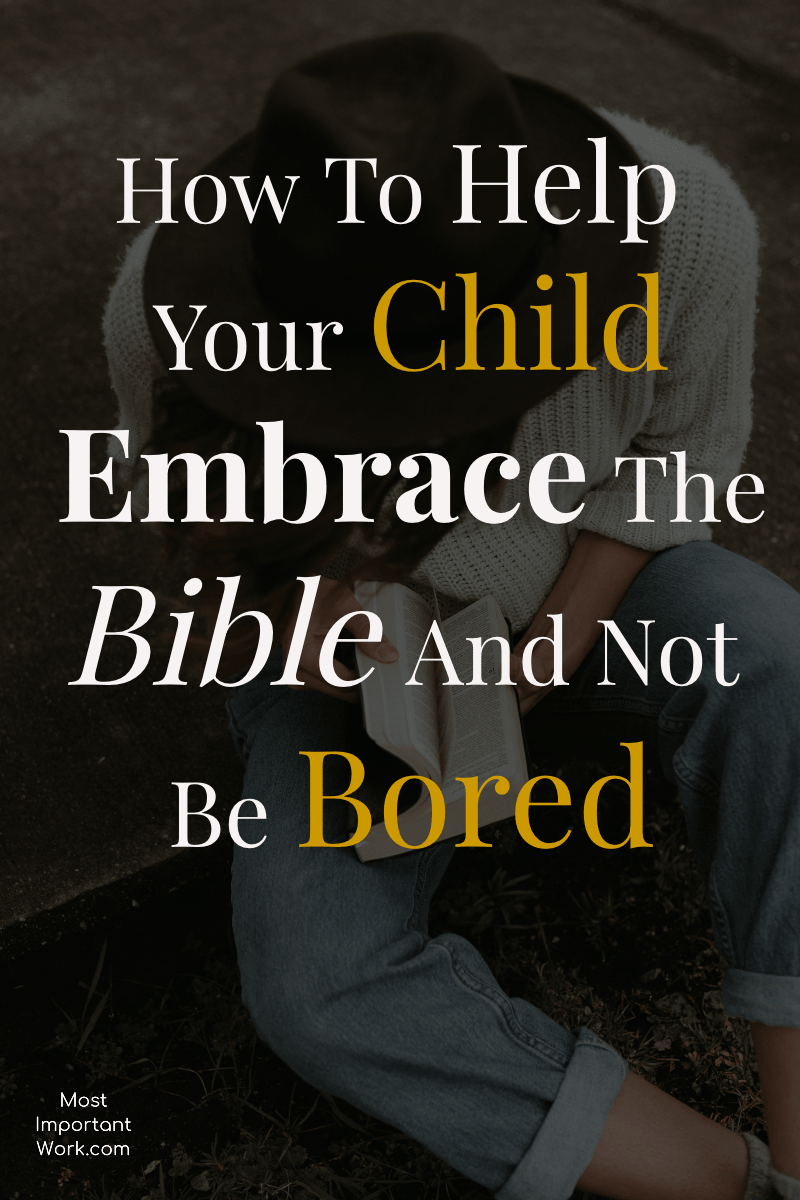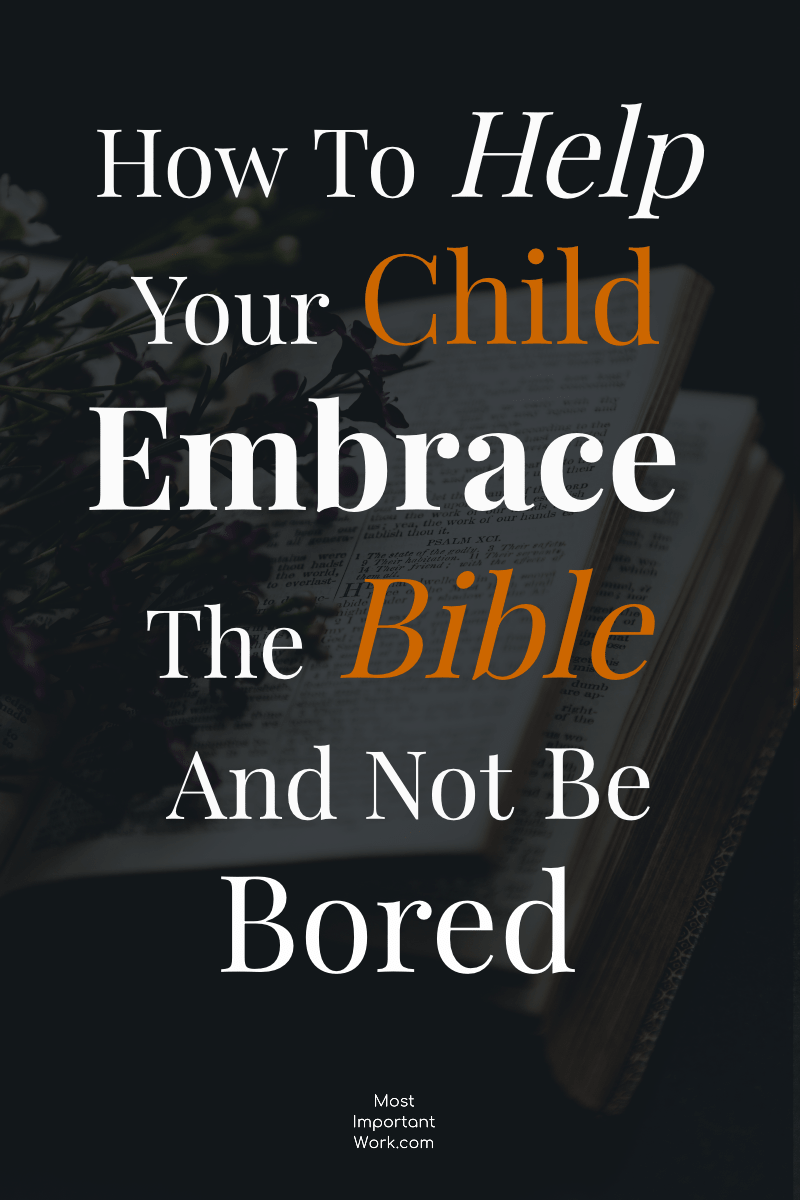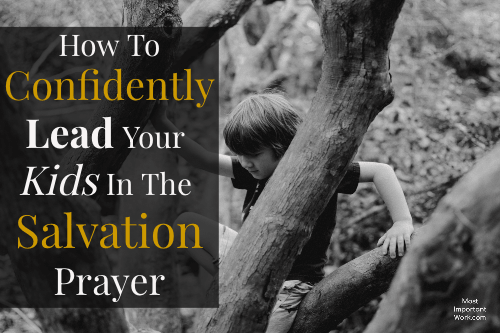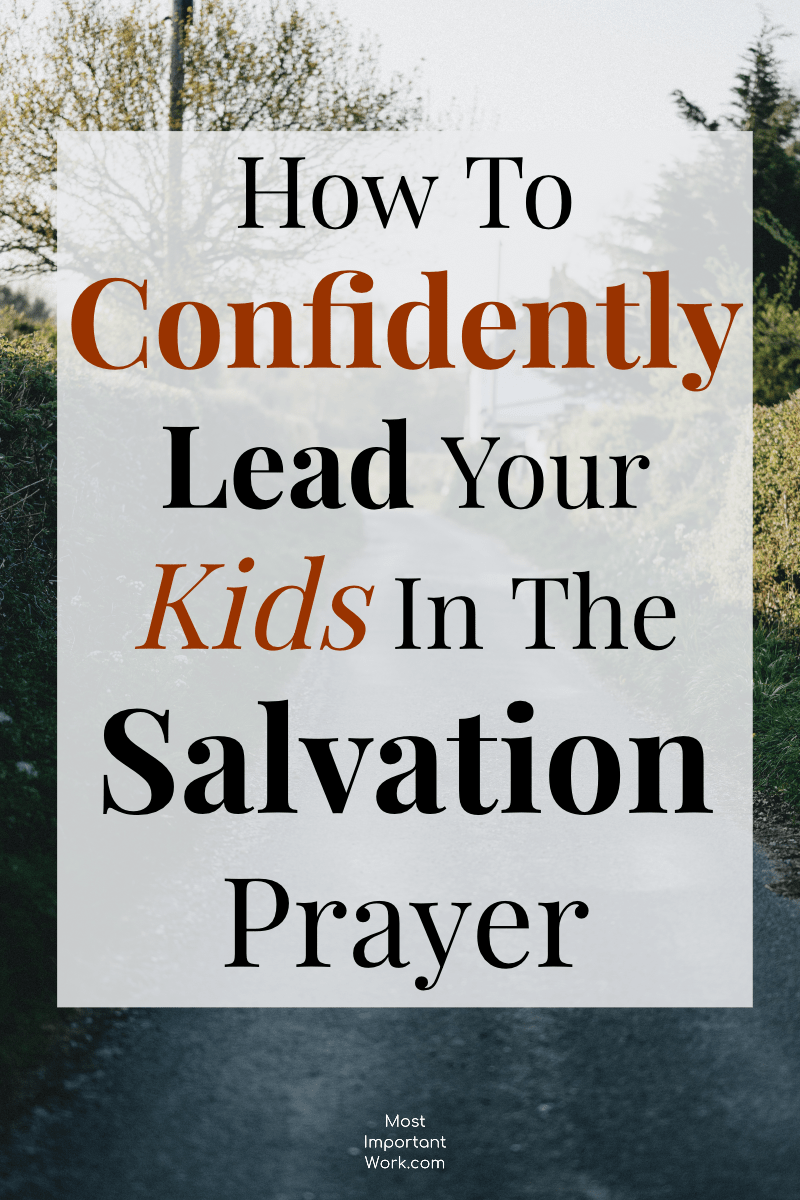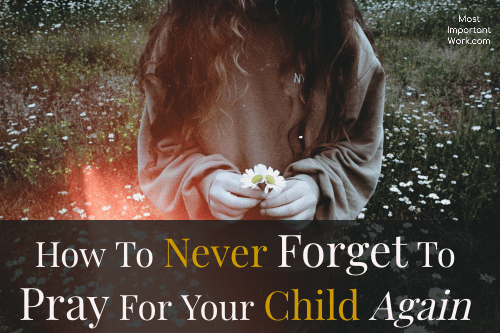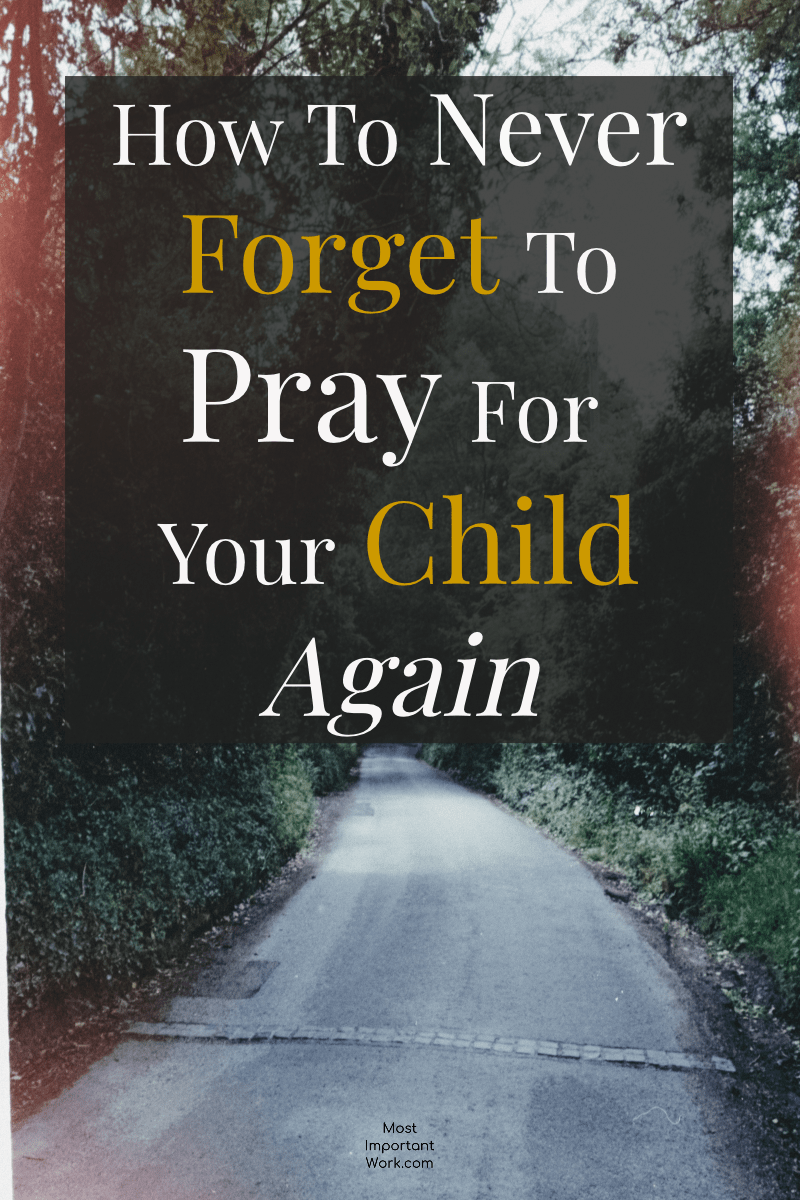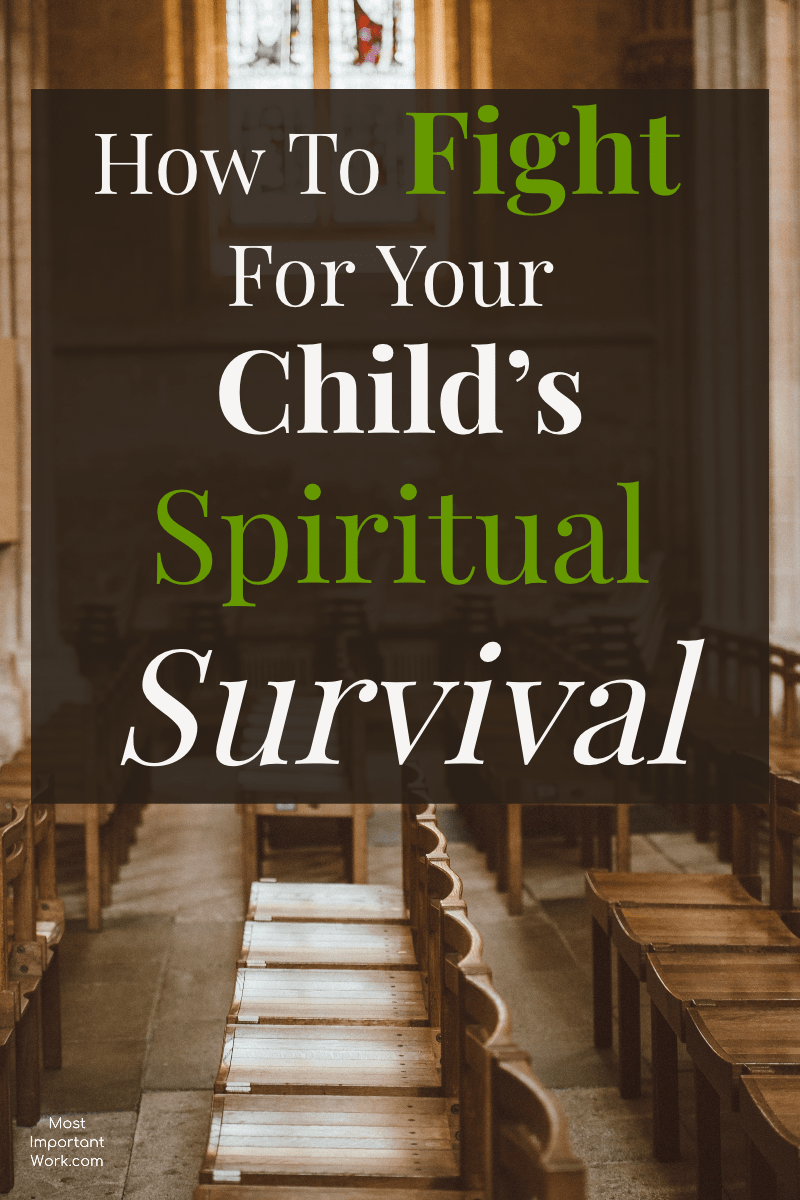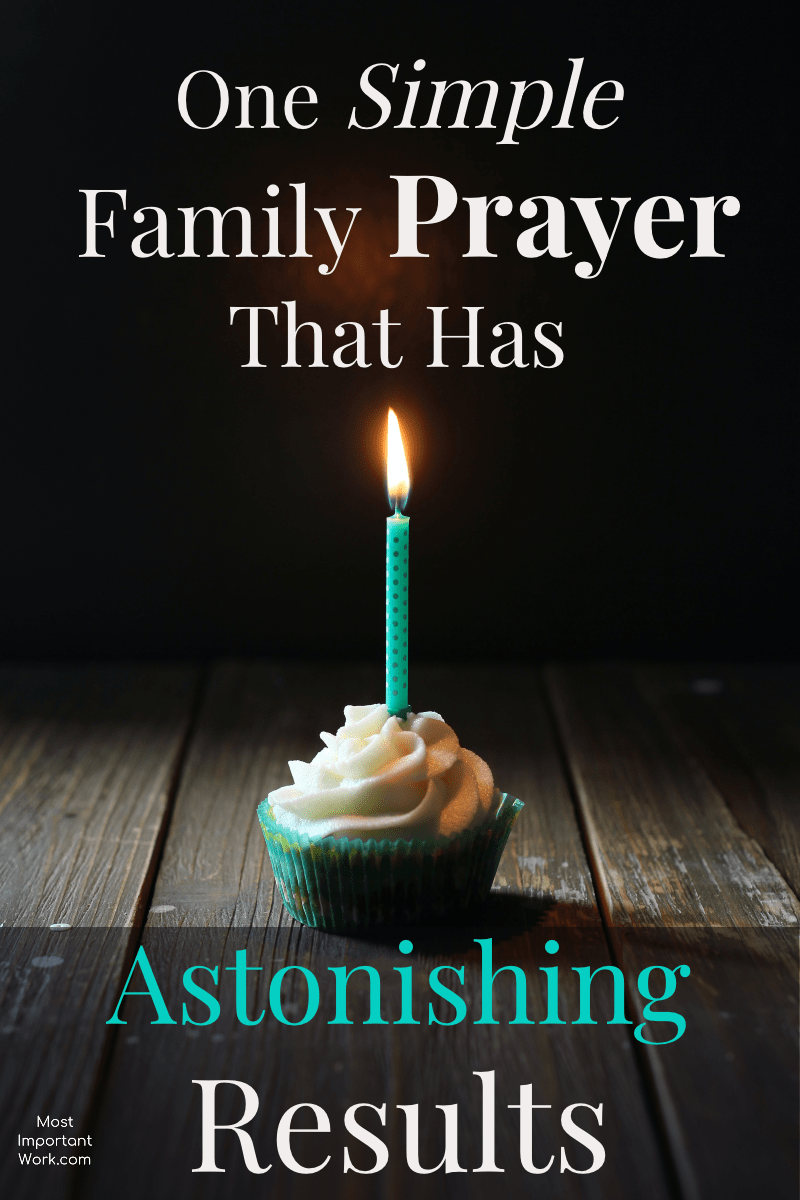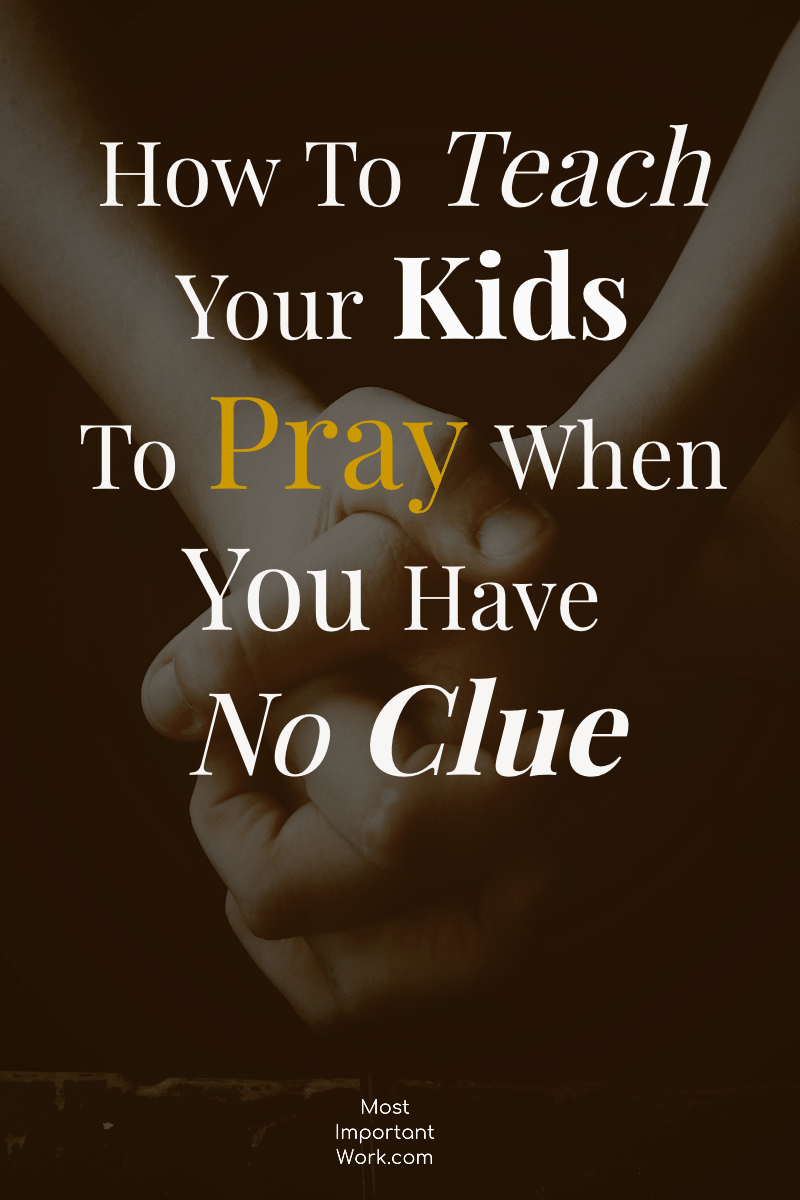
How To Consistently Read The Bible With Your Child
Reading Time: 5 min 7 sec
I shook my head in despair. This is ridiculous, I thought. I spend more time, energy, and money finding creative ways to teach my children Math and English than I do in fostering their relationship with Jesus.
Our family would go through seasons where my kid’s Bible reading was sporadic at best. I would find myself rushing through a daily devotional too, if I’m honest, check it off the list and make myself feel better. I deeply desired to raise children who knew and experienced a relationship with Jesus; but my actions were not reflecting my values. I felt dissatisfied and discouraged.
Thankfully, I stumbled onto the biography of Susanna Wesley, called 7 Women: And The Secret Of Their Greatness by Eric Metaxas. She was the mother of Charles and John Wesley, evangelists who were powerfully used by God and who were also the founders of the Methodist church. She was a mother of 19 children and practically raised them single-handedly (their father was gone a lot).
Metaxas wrote that there was so much noise in her house that to spend daily time with Jesus, she would often throw her apron over her head to limit the distractions. Now that is a mom I can relate to! 🙂 Even more importantly, she was known for her consistency in helping her children create the habit of spending time with Jesus each day.
If she can do it with 19 kids, while parenting single-handedly, so can I. After years of trial and error, here are three steps that have transformed how I read the Bible consistently with my children.
1. Reading The Bible: Finding Your Rhythm
2. Reading The Bible: The Right Tool
3. Reading The Bible: Listen And Respond
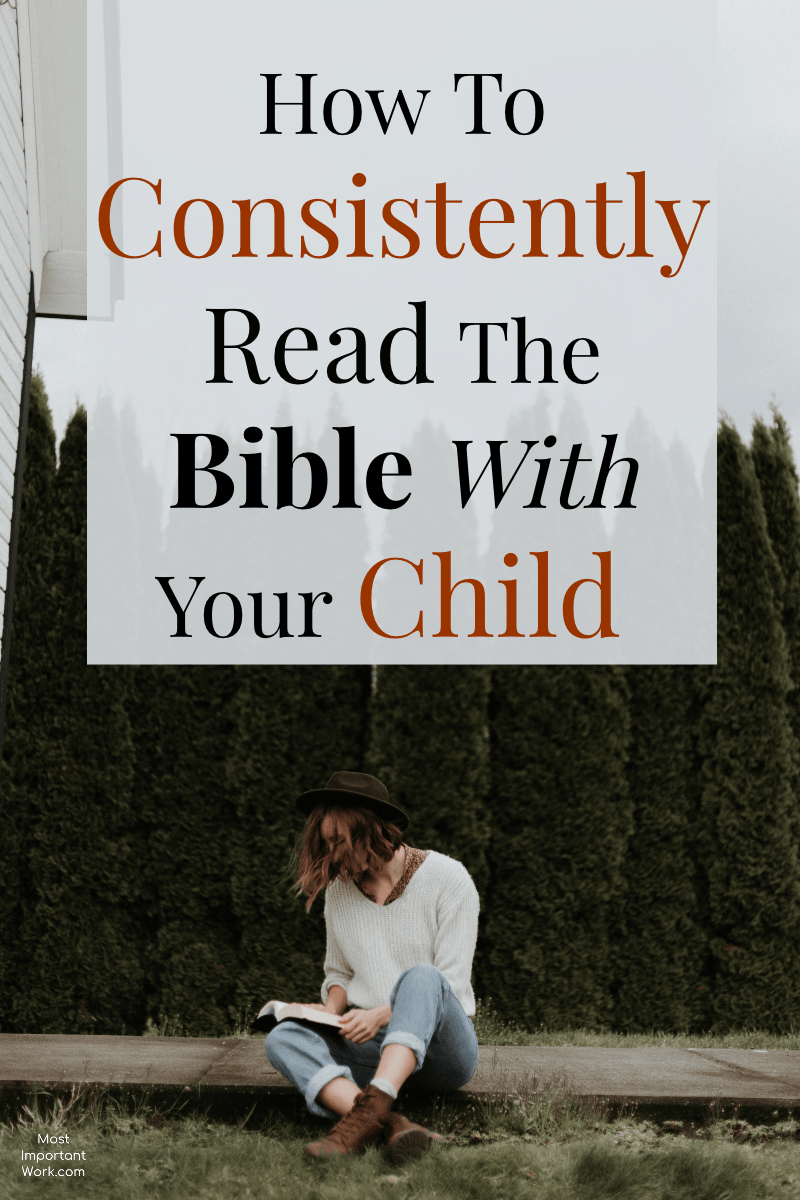
1. Reading The Bible: Finding Your Rhythm
As I read The Hiding Place by Corrie Ten Boom as a child, one of the aspects that struck me was how each morning the family would get dressed, eat breakfast, and start their day centered around the Bible. Corrie’s father would read scripture aloud, and they would follow it with prayer.
This was a great example of a rhythm. They had three things that started their day. Get dressed, eat breakfast, spend time with Jesus. Those were the priorities, and everything else had to wait.
Yes, life with kids can be unpredictable. Okay, who am I kidding? It is always unpredictable. That’s where a rhythm is so genius. Instead of planning our day around the clock and getting frustrated when life happens, we plan our day around our big rocks, the 2-3 things that must happen every day. We take our time, finish a task, we just move on to the next thing on the list.
So, when the dog decides to throw up on the carpet or there’s no milk for breakfast etc. you don’t have to stress out. You know that when you return, time with Jesus is your focus.
Yes, there will be days when reading the Bible with your child does not happen (or anything else for that matter). And that’s okay… that’s life. But what is amazing is that after implementing a daily rhythm, how life transitions from a reactive to a proactive approach. Instead of struggling to make devotions happen each day, a rhythm serves as a flexible placeholder for time with Jesus each day.
2. Reading The Bible: Find The Right Tool
Finding the right tool for the right season makes all the difference in the world. There will be seasons where a long family devotion at home isn’t realistic. That doesn’t mean you have to throw in the towel and just wait until the season passes until you get back into God’s word.
You can spend time with God using a variety of tools. There are different resources for different seasons. During one season, scripture set to music might be drawing your child to God. Embrace it. Reflect on the words. Ask the Holy Spirit to speak to your child.
In Joining Children on the Spiritual Journey, authors Stonehouse and May, explain it like this:
“Being Christian is rooted in a relationship with Jesus, and relationships are unique; they begin in different ways and at different times for different persons. But however they begin, healthy relationships grow and change across the years. We want to honor the uniqueness of each child’s experience with God, and we want to participate with God in encouraging the development of that relationship, their spiritual formation.”
Talk to the Holy Spirit. What are you and your children drawn to right now? What are you interested in? Trust the Holy Spirit is leading you. Your child can interact with God’s word through audio, video, activities, songs, prayer, art, and even nature.
Here are some ideas to get you started:
- Jesus Storybook Bible
- The Visual Bible: Matthew and Acts
- Praying In Color: Kid’s Edition
- The Jesus Storybook Bible Audio
- Listening To Worship Music and Drawing
3. Reading The Bible: Listen and Respond
A crucial part of reading the Bible consistently with your child is the interaction with the Holy Spirit. The Bible is a living, breathing book. It is meant to be read actively, not passively. We do this by first inviting the Holy Spirit to speak to us through his word and second responding to what we have read.
This is KEY. If we are not careful, we can fall into the trap of reading to get it done or to feel good about ourselves. But what God is inviting us into through scripture is soo much better.

He is inviting us into a deeper relationship with him. That comes from responding to what the Holy Spirit is highlighting to us (and our children) through the text.
When you read the Bible with your children, remember that it is all about a relationship. The relationship between your child and God. Allowing space for the Holy Spirit means that as parents, we need to emphasize more silence and less teaching. This forces us to acknowledge that we are not the God of the universe, and the Holy Spirit is our teacher.
How To Read The Bible With Your Child
a. Invite God’s presence. Ask him to speak to you and your child through his word.
b. Read the story or passage slowly. Notice anything the Holy Spirit might be highlighting.
c. At the end of the passage, spend some time in silence.
Give the Holy Spirit elbow room to speak to you and your child. THIS IS CRUCIAL. This is where your child responds to the reading. You are training your child to take the time to listen to the Holy Spirit.
Do not jump over this step even if it feels uncomfortable. When you allow space for the Holy Spirit meditation on scripture goes from head (what I know about God) to heart. The Holy Spirit uses the active, living word of God to transform our hearts.
c. Ask your child what caught their attention as you were reading. It could be something from scripture or an event that happened that day.
d. Finish by closing in prayer and thanking God for his active participation in your lives.
The key to reading the Bible consistently with your child involves establishing a daily rhythm, finding the right tool for the right season, and actively responding to what you have read. You got this, Mom!
What about you? What is your #1 issue when it comes to teaching your child to love Bible reading? Leave a comment, and don’t forget to follow Most Important Work on Pinterest!





